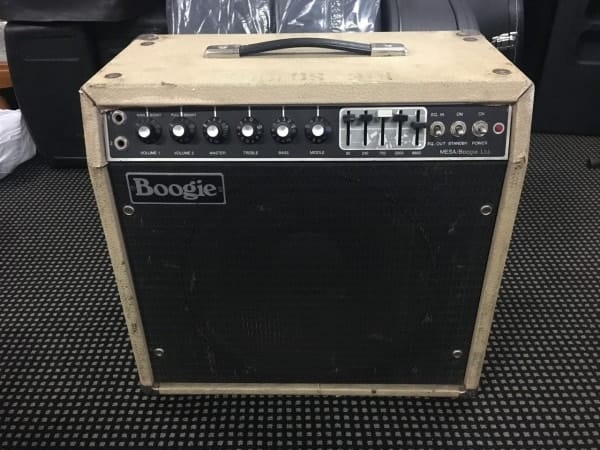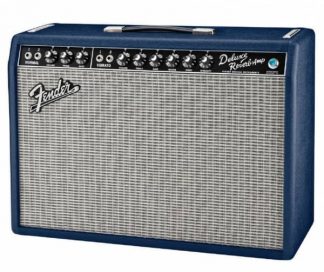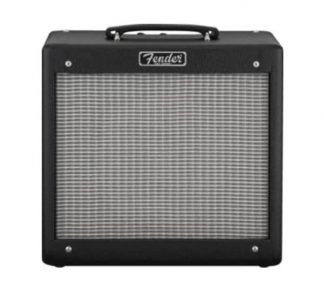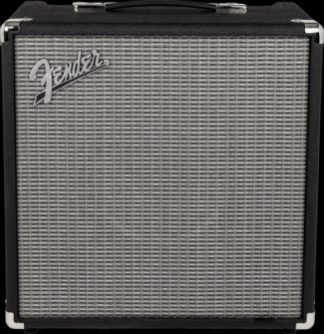Description
Mesa Boogie Mk1 original – Studio 301 Sydney – 60/100w
“In Store & on the Floor”
The original Mesa Boogie Mk1 Studio 301 Sydney amp – 60/100w .
From Wikipedia
The Mesa Boogie Mark Series is a series of guitar amplifier made by Mesa Engineering (more commonly known as “Mesa/Boogie”). Originally just referred to as “Boogies,” the product line took on the moniker “Mark Series” as newer revisions were put into production. The Mark Series amplifier was Mesa’s flagship product until the introduction of the Rectifier series, and the amplifiers are very collectable.
Mark I
Randall Smith began Mesa/Boogie with a practical joke: he borrowed a Fender Princeton (a small 12-watt amplifier) from his friend, Barry Melton of Country Joe and the Fish, and “hotrodded” it by replacing the amplifier section with a powerful Fender Bassman amp and installing a 12-inch speaker instead of the original 10-inch. The resulting amplifier proved to be loud and successful, and Smith made more than 200 of these Princeton “Boogies”—a name allegedly provided by Carlos Santana,[1] who is to have exclaimed “This thing boogies!”[2]
A second important improvement was developing an extra gain stage for the guitar input. Smith added an extra tube gain stage to the preamp, with three variable gain controls at different points in the circuit (what is now called a “cascaded” design), creating the first high-gain amplifier. He set about designing a guitar amplifier around the new principle, and in 1972 the Mark I was released.[
One of the more notable amps in the series was built in 1977, with serial number A804: this is the amp built for Keith Richards, the first one in a long collaboration between Smith and the Rolling Stones, a collaboration which started somewhat inauspiciously when the Stones manager asked Smith for some free amps (“We’re the Rolling Stones; we don’t pay for amps”), and Smith refused. (Richards had played Santana’s Boogie and decided he wanted one too.) Finally, Smith talked to Richards and they agreed that he would send them an amp, and that the Stones would pay for it or return it. Richards ended up using the amp for the El Mocamboshow (as one of six), and the Stones, over the years, received and paid for over forty of Smith’s amps.
The first Boogies are referred to as Mark I’s, though they were not given this name until the Mark II was released. They were 60 or 100 watt combo amps with a 12-inch speaker, primarily Altec-Lansing 417-8H Series II. The Mark I had two channels: The “Input 2” channel, voiced like the Fender Bassman, and the high gain “Input 1” channel, which produced the overdriven “Boogie lead” sound used most notably by Carlos Santana on Abraxas, and by The Rolling Stones’ Keith Richards andRon Wood, who used the amps live and in the studio from 1977 until 1993. Examples of this amp in its original form and in good condition are sought after by collectors and guitar aficionados. Reverb was optional, and not present on many early Boogies. Later, Mark I models were available with reverb and/or graphic EQ.
HISTORY of EMI 301 Studio
1926 — Australia’s first record factory, Columbia Graphophone Company, opens in Homebush
1928 — Records Charles Kingsford-Smith flying in from America
1932 — First recording of the Melbourne Cup
1950 — First recording of the Sydney Symphony Orchestra
1940 — Works with the popular Dad & Dave radio drama
1954 — Moves to 301 Castlereagh Street and renamed EMI Studios
1978 — Facility rebuilt, expanded and renamed Studios 301
1979 — Makes first digital recording in Australia
1999 — Relocates to Alexandria at a cost of $8 million
2012 — Expands and opens six new music production studios
2015 — Acquired by legendary London recording house Abbey Road Institute
2016 — Celebrates its 90th anniversary




